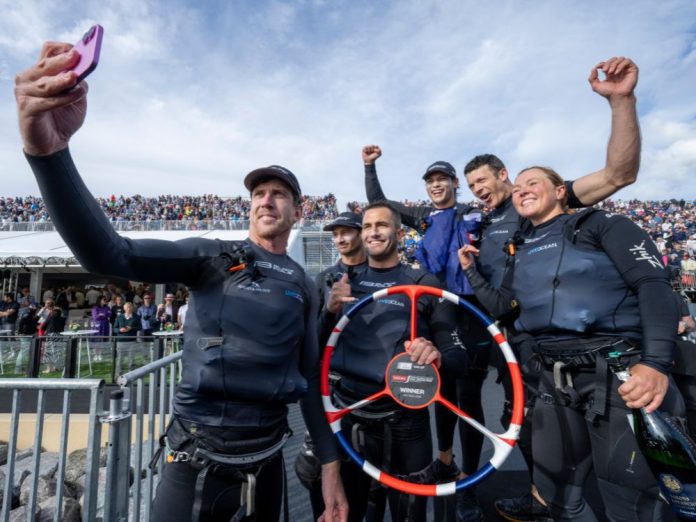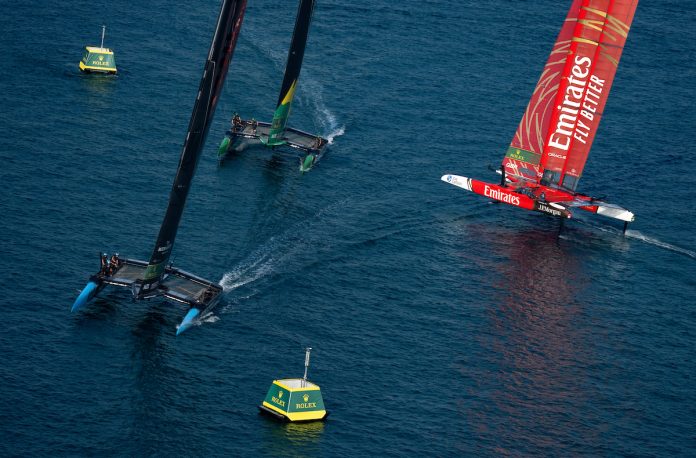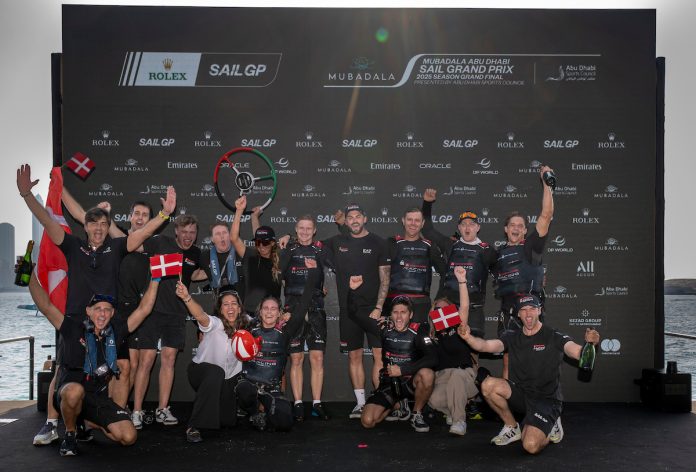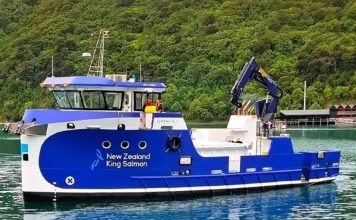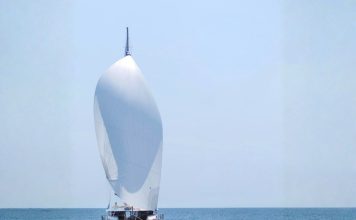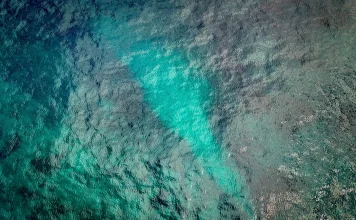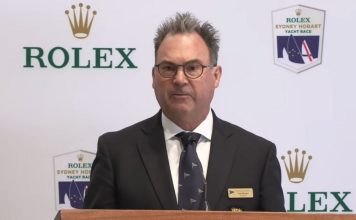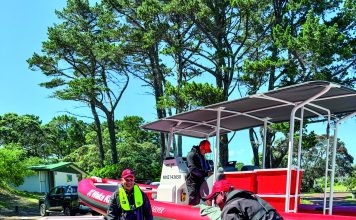The desert heat is rising, and so is the tension. From 29 November to 1 December, the Mubadala Abu Dhabi Sail Grand Prix will bring the curtain down on SailGP Season 5, with four national teams still in contention for the Rolex SailGP Championship and its US $2 million purse.
After 11 events across 5 continents, Emirates GBR lead with 85 points, chased by New Zealand’s Black Foils on 82, Australia’s BONDS Flying Roos on 80, and Spain’s Los Gallos on 76. The F50 with the highest season total after Abu Dhabi will be crowned world champion.
Current forecasts show 29 °C, northeasterlies around 5 m/s (10 knots), low 0.3 m seas, and a one-in-three chance of showers , classic light-air Gulf racing that rewards finesse, stability, and patience over brute power.
According to SailGP data analyst Will Carson, Emirates GBR have been the kings of consistency, with 11 race wins and 29 top-three finishes; the best tally of any team this season. The Black Foils sit close behind with 10 race wins and 24 top-threes, while the BONDS Flying Roos boast 9 wins and 22 top-threes. Los Gallos, fourth overall, have 5 race wins and 18 podiums; fewer victories, but proof of relentless front-pack speed.
Raw flight time doesn’t tell the whole story. The key is stable flight; consistent ride-height control that preserves speed through manoeuvres. In SailGP’s internal foiling-score index, Emirates GBR, the Black Foils, and the Flying Roos lead the fleet, showing that efficiency, not airtime, is what wins races.
Los Gallos have the league’s best Final-conversion rate, winning two of the three Finals they’ve reached this season (San Francisco and New York). Emirates GBR have qualified for six Finals but won only two, while the Black Foils have two wins from five Finals. The Flying Roos, despite reaching five Finals, have just one win, a reminder that execution under pressure still trumps statistics.
Last year, the Black Foils mastered these same waters to claim event victory ahead of Spain and the USA, but not the championship itself. The narrow, mirror-flat Abu Dhabi course punishes over-steering and rewards measured flight control.
Black Foil‘s Strategist Liv Mackay says success starts long before the start gun:
“About ten days before the event, we’re already analysing venue features, currents, course geometry, weather history. If you could drive at mark one …, you were almost guaranteed a top-three finish. That sort of insight becomes critical.”
Exclusive: Liv Mackay, New Zealand’s SailGP strategist, on mastering the race before it begins
Working with Peter Burling, Sam Meech, and Jo Aleh, Mackay filters live data, wind cues, and fleet movement into sharp tactical calls. Her calm, analytical approach steadied the team after a rocky start.
“We took a while to find our feet as a team,” she admits, “but by New York and Portsmouth, the work was clearly paying off.”
That mid-season turnaround was real. In Sassnitz (Germany) the Black Foils sailed cleanly to fourth, avoiding the chaos that struck other teams. In Saint-Tropez, they finished second overall before heavy weather forced cancellation. Then came Geneva, their one stumble, eighth place amid light, patchy breeze; followed by an immediate rebound at Cádiz, second behind GBR.
Across Europe, they placed on the podium in half their starts and inside the top four in three, a sustained form not seen since early 2024. Geneva aside, the pattern was one of composure and control, exactly the qualities that win championships.
Alongside Mackay’s calls is Leo Takahashi, SailGP’s youngest flight controller. Stepping in after Andy Maloney’s departure, Takahashi has refined the team’s handling of the new T-foil package.
“The T-foils were a full baptism of fire for us flight controllers,” he tells Lisa Darmanin. “There’s no hiding from your mistakes… It feels like we’re building into it now.”
Under his control, the Black Foils have ten fleet-race wins, seven more than this time last year, proof that their precision and coordination are peaking at the right moment.
Dylan Fletcher’s Emirates GBR carry a three-point lead and the best light-air record in the fleet. Tom Slingsby’s Flying Roos remain lethal in finals, even if their conversion rate has dipped. Diego Botín’s Los Gallos are the reigning champions, inconsistent this year but devastating when they find rhythm.
A Boating New Zealand analysis using current points, form trends and Abu Dhabi’s forecast suggests the following probabilities of winning the overall title:
| Team | Current Pts | Win Probability | Rationale |
|---|---|---|---|
| Emirates GBR | 85 | ≈ 72 % | Light-air specialists; strong starts; points buffer. |
| New Zealand — Black Foils | 82 | ≈ 22 % | Proven in venue; rebounded from Geneva; must beat GBR by ≥ two places. |
| Australia — BONDS Flying Roos | 80 | ≈ 6 % | Need top-two finish plus GBR/NZL slip; softer forecast dampens edge. |
| Spain — Los Gallos | 76 | < 1 % | Strong year but gap too wide for one event. |
Model based on SailGP Season 5 points structure and historical venue performance
As always, SailGP’s finale fuses elite sport with big-stage entertainment. Olly Murs headlines Saturday night at the race village, while DJ Mark Wright closes Sunday’s Après-Sail presented by Mastercard.
But once the music fades and the F50s line up for the last start, millimetres will decide millions, foil height, wind shift, reaction time.
“Little things like that are going to make a big difference come Abu Dhabi,” says Takahashi.
As Mackay put it before Portsmouth, words equally true now: “We’re ready. It’s going to be intense, but exciting.”
Expect light-to-moderate breeze, flat water, and close-quarters racing inside the Mubadala Breakwater. In these conditions, small-boat discipline will matter more than straight-line speed.
If Burling’s crew can replicate their 2024 mastery and sustain the composure honed through Europe, New Zealand could yet reclaim the SailGP crown.
When the foils lift and the spray arcs through Abu Dhabi’s desert haze, Season 5 will end the way it began; fierce, and utterly spectacular.








